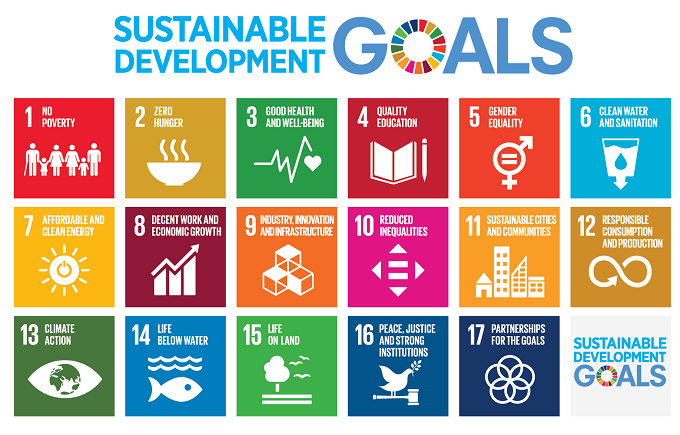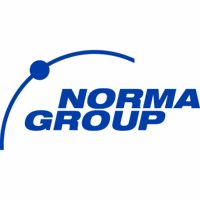This post is also available in: Deutsch
In 2015, The United Nations (UN) adopted the Sustainable Development Goals (SDGs) to be achieved worldwide by 2030. But how are these goals of relevance to NORMA Group? Do they play a role in our day-to-day business? And what concrete contribution can NORMA Group make here?
It was in September 2015 that a milestone for the coming decade was laid in New York City. In the UN building, the representatives of 193 countries set goals that they wanted to achieve by 2030. The goals focus not only on climate protection (which was concretized shortly afterwards in the Paris Climate Agreement), but also provide guidelines for 17 economic, social and ecological areas.
Each of the areas of action has been assigned indicators and targets in order to monitor compliance. Every year, the United Nations reviews their implementation and whether the international community is on the right track. The complete report on 2020 can be found here.

What does NORMA Group have to do with these goals?
The agreement on the global goals was signed by representatives of countries and is therefore primarily addressed to the nation states. Nevertheless, companies play an important role in their implementation. The goals cannot be achieved without their cooperation. They therefore also provide a source of orientation for the sustainable management within companies.
NORMA Group therefore also asks itself what contribution it can make to the “Agenda 2030.” The Sustainable Development Goals are incorporated into NORMA Group’s business in various ways. Since the goals and indicators often cannot be adopted one-to-one, they have to be broken down to the company context. They are implemented accordingly, for example in business development in the areas of water management or e-mobility and in the Corporate Responsibility Roadmap, which applies to the entire company.
In an analysis, NORMA Group identified six topics as particularly relevant:
Goal 4 – Quality Education
Goal 6 – Clean Water and Sanitation
Goal 8 – Decent Work and Economic Growth
Goal 9 – Industry, Innovation and Infrastructure
Goal 12 – Responsible Consumption and Production
Goal 13 – Climate Action
NORMA Group is also contributing to the achievement of other goals (for example “Goal 3 – Good Health and Well-being” and “Goal 11 – Sustainable Cities and Communities”).
Do these topics play a role in our day-to-day work?
But what does that mean in concrete terms? How are these issues put into practice in NORMA Group’s day-to-day work? In answering these questions, it is worth taking a look at three concrete examples:
Example 1: Goal 6 – Clean Water and Sanitation
“Substantially increase water-use efficiency in all sectors by 2030 and ensure sustainable freshwater withdrawal and supply to address water scarcity and significantly reduce the number of people suffering from water scarcity.”
A large part of NORMA Group’s product portfolio consists of water management products. On the one hand, these solutions ensure the drainage of large amounts of water and thus protect buildings and green spaces. On the other hand, NORMA Group’s irrigation solutions contribute to the efficient use of water: drip irrigation, for example, uses around 60 percent less water than conventional sprinklers or manual irrigation.
NORMA Group has also set goals for reducing water consumption in its own production. With its NORMA Clean Water project, NORMA Group also contributes to access to clean drinking water and sanitary facilities in developing and emerging countries.
Example 2: Goal 13 – Climate Action
“Integrate climate change measures into national policies, strategies and planning.” (Indicator: greenhouse gas emissions per year)
By 2024, CO2 emissions from the consumption of electricity, gas and district heating at NORMA Group’s production sites are to be reduced by 19.5 percent compared to 2017. To achieve this goal, NORMA Group is introducing measures aimed at increasing energy efficiency. On the other hand, NORMA Group is purchasing green electricity at sites in Switzerland, Sweden, Poland and the Czech Republic to reduce its carbon footprint.
Example 3: Goal 4 – Quality Education
“Target 4.6.: By 2030, substantially increase the number of young people and adults who have the appropriate skills, including technical and vocational qualifications, for employment, decent work and entrepreneurship.”
NORMA Group has set itself the goal of providing all employees with an average of 30 hours of training per year. In addition, managers are trained on how to develop their team members. Against the backdrop of the corona crisis, training was increasingly held online. In a way, training is only the tip of the iceberg; about 80 percent of employees’ learning experience takes place “on the job” every day.
Summing up
The Sustainable Development Goals clearly play a role at NORMA Group. They are modified in such a way that they make sense in the company context and are incorporated into business development and the Corporate Responsibility Strategy.
An overview of all the relevant goals for 2021 can be found on website.



